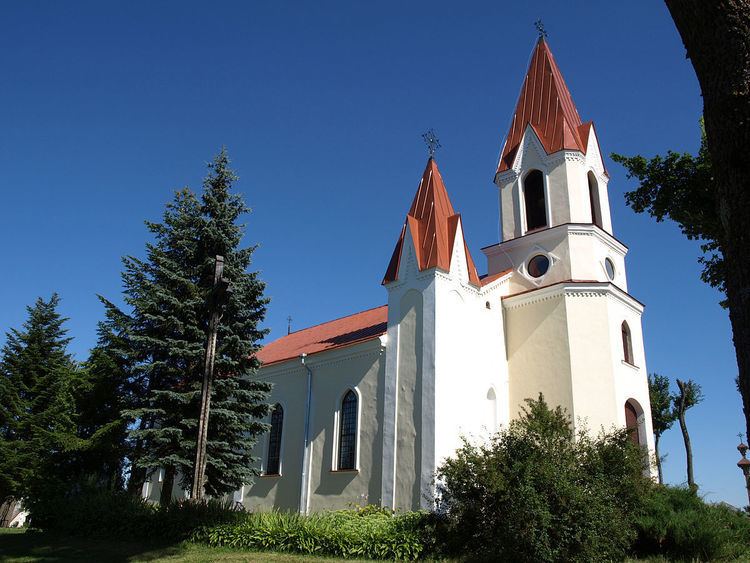Eldership Maišiagala eldership First mentioned 1254 Population 1,634 (2001) | Capital of Maišiagala eldership Time zone EET (UTC+2) Local time Saturday 5:39 PM | |
 | ||
Weather 4°C, Wind S at 11 km/h, 70% Humidity Municipality Vilnius District Municipality | ||
Maišiagala (Polish: Mejszagoła) is a historic town in Vilnius district municipality, Lithuania. It is located about 25 km (16 mi) northwest of Vilnius near the Vilnius–Panevėžys highway. According to the 2001 census, it had population of 1,634.
Contents
Map of Mai%C5%A1iagala, Lithuania
History
Maišiagala, first mentioned in 1254, is one of the earliest Lithuanian settlements. It had a large defensive castle, which was part of the defensive network around Vilnius against the Teutonic Knights. The wooden castle was destroyed in 1365, but was rebuilt. According to Jan Długosz, Grand Duke of Lithuania Algirdas died in this castle in 1377. After the Christianization of Lithuania in 1387, Maišiagala was one of the seven towns in Lithuania where a Catholic church was built. In 1390, during the Lithuanian Civil War of 1389–1392, the castle was burned down and was not rebuilt.
The town continued to exist, growing as a trading center, and was granted city privileges sometime in mid-16th century. Its coat of arms depicted Saint Anthony of Padua. At the time it was royal property and King of Poland Sigismund I the Old built a castle for his Italian wife Bona Sforza. Therefore, the old hill fort is sometimes known as Bona's Hill. Sigismund also reconstructed the town church. After extinction of the Jagiellon dynasty, Maišiagala lost its status as royal summer residence and began to decline. It became property of various nobles: first Sapieha, then Tyzenhaus family. In 1805 the Houvalt family bought the town from heirs of Ignacy Massalski, Bishop of Vilnius. They built a manor, which now houses a school, in the Classical style.
After World War I, the town was a target of clashes in the Polish–Lithuanian War. After Żeligowski's Mutiny in 1920, it became part of the Republic of Central Lithuania (1920–1922), which merged into the Second Polish Republic in 1922. After the Soviet–Lithuanian Mutual Assistance Treaty of 1939, Lithuania acquired the town.
Among its natives was the great Jewish philosopher Rabbi David ("the Nazirite") Cohen.
